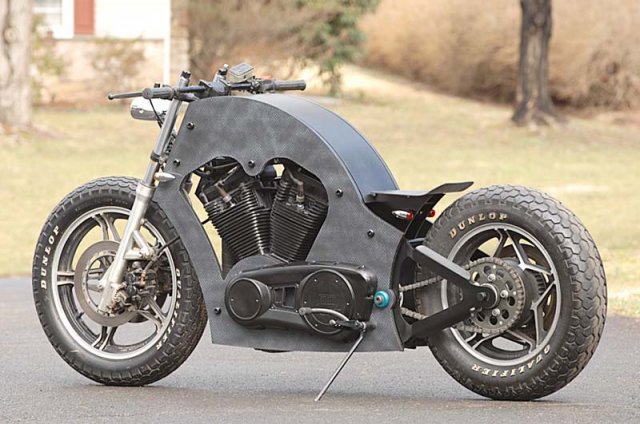Revolution Motorcycle’s RV100 Dares to be Different
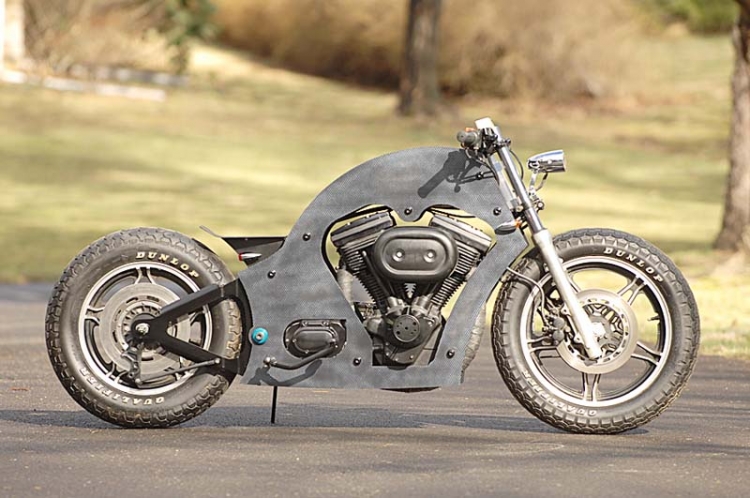
Story by Buck Manning
Well if you haven’t turned the page in shock after seeing this most unusual design study by Martin O’Toole of Revolution Motorcycles in Doylestown, Pennsylvania, you’ve got to want to find out more about a design statement that’s about as different from your average bobber/chopper/dresser as you can get. Probably the best way to begin to explain this creation is to let the designer and builder speak about how this radical bike came to be. “It came out of a request from one of my customers who was a job shop house that did water jet and laser jet cutting and they were interested in a trade show display,” said Martin. “Something that would be attention getting and also highlight their manufacturing abilities.”
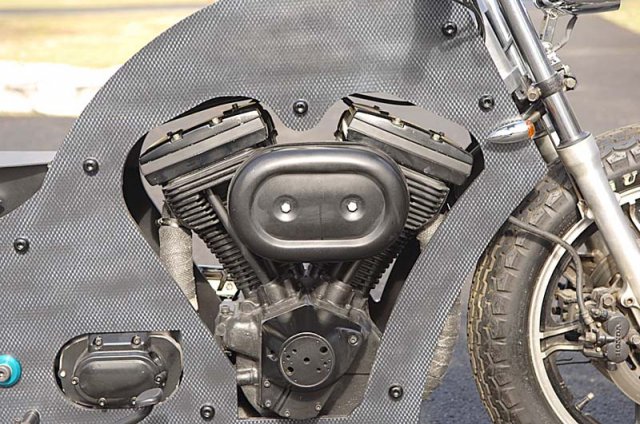
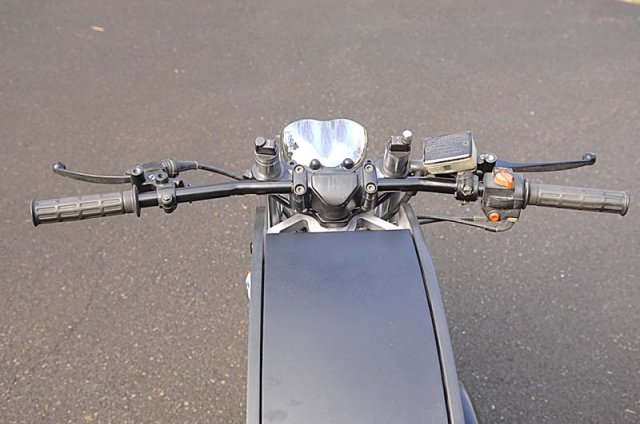 Punching the numbers into a CAD/CAM program gave Martin the go ahead to start the actual build using 3/8″ thick fiberglass sheets for his sideplates which were cut out by water jet. This is not like monocoque construction where the fabricated shell carries the stress and parts are attached to it but is two parallel plates outside the drivetrain and are connected by different machined elements. “There’s a series of hard points on the sideplates where hardware goes through it with stand-offs connecting the two plates and bolted together,” said Martin. “Below the engine there’s a machined steel sub-frame that carries the engine and transmission and it also has the integral standoffs that span thetwo plates. Where the forks attach to the bike, there are two CNC machined fork yokes that carry the bearings and allow the forks to be mounted.” The lack of a downtube allows the front wheel to be tucked in for a wheelbase of only 59″. Martin said,” One of the things I really didn’t take advantage of was the elimination of a lot of the tubing between the engine and the transmission. I could’ve moved the transmission in closer to the engine because there was really nothing in between them that would’ve prevented that.” That’s all just part of what makes this design interesting as making adjustments like this along with geometry changes involves programming the cutting tools, whacking it out of stock, and bolting it back together.
Punching the numbers into a CAD/CAM program gave Martin the go ahead to start the actual build using 3/8″ thick fiberglass sheets for his sideplates which were cut out by water jet. This is not like monocoque construction where the fabricated shell carries the stress and parts are attached to it but is two parallel plates outside the drivetrain and are connected by different machined elements. “There’s a series of hard points on the sideplates where hardware goes through it with stand-offs connecting the two plates and bolted together,” said Martin. “Below the engine there’s a machined steel sub-frame that carries the engine and transmission and it also has the integral standoffs that span thetwo plates. Where the forks attach to the bike, there are two CNC machined fork yokes that carry the bearings and allow the forks to be mounted.” The lack of a downtube allows the front wheel to be tucked in for a wheelbase of only 59″. Martin said,” One of the things I really didn’t take advantage of was the elimination of a lot of the tubing between the engine and the transmission. I could’ve moved the transmission in closer to the engine because there was really nothing in between them that would’ve prevented that.” That’s all just part of what makes this design interesting as making adjustments like this along with geometry changes involves programming the cutting tools, whacking it out of stock, and bolting it back together. 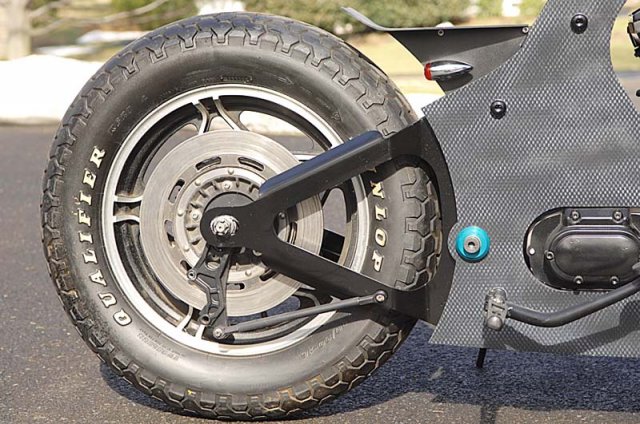
Gas and oil are contained in a single steel tank, which Marin cut on a laser and welded up, and are not part of the structure, just containers for engine liquids. The view over the backbone is Martin’s favorite,” From certain angles I don’t like the way it looks. I don’t like the fiberglass plates coming down in front of the engine for instance. I’ve done some things to make it look less tank-like in other designs I’m working on.”
Revolution Motorcycles RV100 can be considered a work in progress that not only thinks outside the box, but could be the box you use to mount your parts inside of. Martin’s eagerly awaiting your reaction to it, so let us know what you think.
